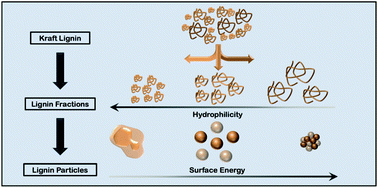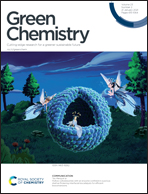Understanding lignin micro- and nanoparticle nucleation and growth in aqueous suspensions by solvent fractionation
Abstract
In recent years, there have been many advances toward developing sustainable, micro- and nanoscale materials from biobased resources such as lignin aimed at strengthening the bioeconomy. It is critical to study the factors affecting nucleation and growth mechanisms, as well as the stability of lignin micro-and nanoparticles (LPs), to further enhance the development of such materials. However, there remains a gap in the literature examining the many interactions present during and after LP formation. These interactions vary with the chemical composition and molecular weight distribution of different kraft lignin (KL) fractions. To examine the composition of different lignin fractions, KL can be fractionated using water-miscible organic solvents of different polarities such as tetrahydrofuran (THF), acetone, and ethanol. Herein, we show that the micro- and nanoparticles formed from each lignin fraction exhibit significant differences in their size (50–300 nm), particle aggregation and fusion propensity, and spherical morphology in aqueous suspensions. These differences are proposed to be a result of the solvent–lignin–water interactions related to molecular weight and functional groups of the lignin fractions and solvent/water polarity. Another factor affecting the nucleation and growth of LPs is the lignin concentration. The LPs formed at low lignin concentrations exhibit a larger average particle size compared to the LPs formed at higher lignin concentrations due to the aggregation and fusion of the small particles. These results will allow for a stronger foundation in understanding the nucleation and growth of LPs when attempting to develop value-added applications for kraft lignin.



 Please wait while we load your content...
Please wait while we load your content...